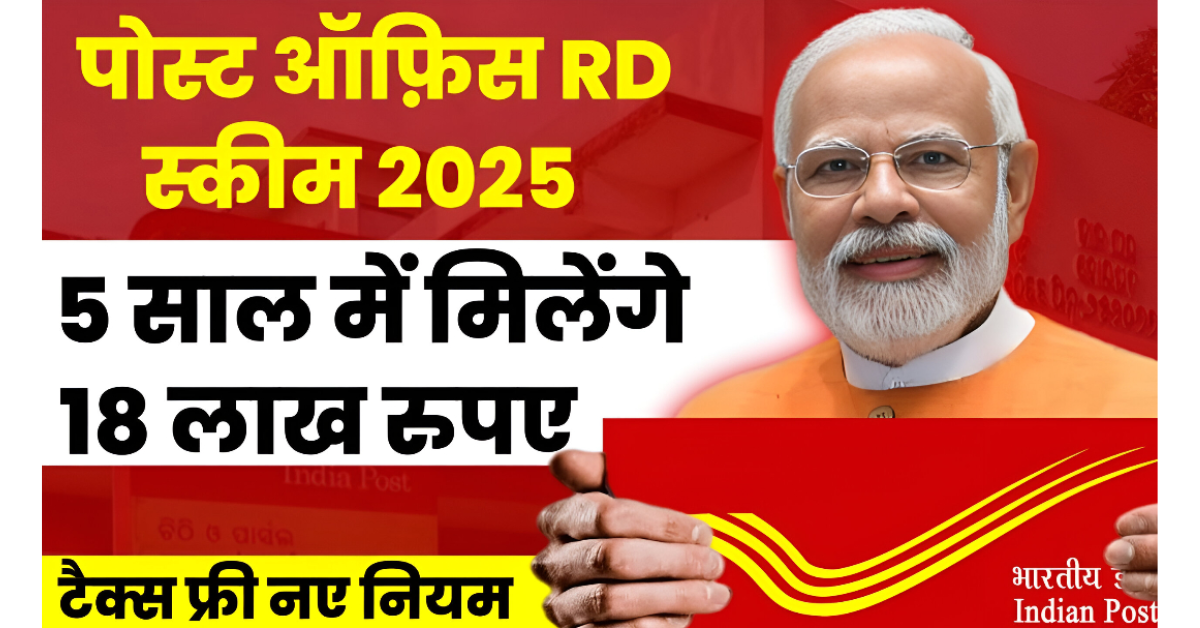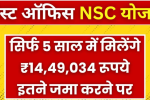In a time when inflation is rising and financial security is uncertain, the Post Office Public Provident Fund (PPF) Scheme has become a beacon of hope for middle-class and low-income families. This long-term savings plan, backed by the Government of India, is not only safe but also offers impressive returns without any market risk.
One of the most talked-about aspects of the PPF scheme today is that an investment of ₹5 lakh can grow to ₹16.17 lakh over time. Let’s dive deep into how this is possible and why PPF continues to be the preferred choice for millions of Indians.
💼 What is the PPF Scheme?
The Public Provident Fund (PPF) is a government-backed savings scheme introduced in 1968 to promote small savings and long-term investments with tax benefits. It is available at Post Offices and authorized banks across India.
PPF offers compound interest, tax-free returns, and complete capital protection. It is especially popular among salaried individuals, self-employed people, and those who do not have access to EPF (Employees’ Provident Fund).
📈 PPF Scheme Highlights – 2025
| Feature | Details |
|---|---|
| Minimum Investment | ₹500 per year |
| Maximum Investment | ₹1.5 lakh per year |
| Interest Rate (2025 Q1) | 7.1% (compounded annually) |
| Lock-in Period | 15 years (extendable in 5-year blocks) |
| Tax Benefits | Under Section 80C of Income Tax Act |
| Interest & Maturity Amount | Fully Tax-Free |
| Risk Level | Nil (Government-backed) |
💡 How ₹5 Lakh Becomes ₹16.17 Lakh – The Power of Compounding
Many people wonder: “How can a ₹5 lakh investment become ₹16.17 lakh?”
Here’s the calculation based on maximum investment of ₹1.5 lakh per year over 15 years:
- Total Investment over 15 years: ₹22.5 lakh
- Interest Rate: 7.1% compounded annually
- Final Maturity Amount: ₹40.68 lakh
- But even with ₹5 lakh invested over time (for example ₹33,333 per year for 15 years), the maturity value comes close to ₹16.17 lakh
🧮 Example Calculation:
| Year | Yearly Deposit | Interest Earned | Total Balance |
|---|---|---|---|
| 1 | ₹33,333 | ₹0 | ₹33,333 |
| 5 | ₹1,66,665 | ₹30,000 approx | ₹1,96,665 |
| 10 | ₹3,33,330 | ₹2,00,000+ | ₹5.3 lakh+ |
| 15 | ₹5 lakh total | ₹11.17 lakh | ₹16.17 lakh ✅ |
This is a tax-free amount—which means no deductions at maturity.
🧑👩👧👦 Why PPF Is a Lifeline for Poor and Middle-Class Families
PPF is extremely popular among common people, especially in rural and semi-urban areas, because:
✅ 1. Low Minimum Investment
You can start with just ₹500 per year. Even those with low incomes can gradually build wealth.
✅ 2. No Market Risk
Unlike mutual funds or stocks, PPF is not linked to market performance. Your money is 100% safe.
✅ 3. High and Stable Returns
With a 7.1% annual interest rate, compounding annually, your savings grow steadily.
✅ 4. Triple Tax Benefit (EEE)
- Exempted Investment (under 80C)
- Exempted Interest
- Exempted Maturity
You save tax while earning tax-free returns.
🧾 Eligibility to Open a PPF Account
- Any Indian citizen above the age of 18
- One account per person allowed
- Parents can open PPF accounts on behalf of minor children
- NRIs are not eligible
🏤 How to Open a PPF Account at Post Office
Opening a PPF account is simple and can be done in person or online (for banks). At the Post Office, follow these steps:
- Visit your nearest Post Office
- Carry Aadhaar card, PAN card, and a passport-size photo
- Fill the PPF Account Opening Form
- Submit documents and deposit the initial amount
- Get your PPF Passbook or digital confirmation
🔄 Can I Extend My PPF After 15 Years?
Yes! After 15 years, you can:
- Withdraw the full maturity amount
- Or extend in 5-year blocks with or without further contributions
This makes PPF ideal for retirement planning, especially if you’re in your 30s or 40s today.
❓ Premature Withdrawal Rules
You can partially withdraw from your PPF account after 7 years, up to 50% of the balance. Full premature closure is allowed only under:
- Life-threatening illness
- Higher education expenses
- Change in residency status
🔁 Loan Facility on PPF
From the 3rd to 6th financial year, you can take a loan against your PPF balance at a low interest rate (1%–2% above PPF rate), making it a smart alternative to personal loans.
🧠 Who Should Invest in PPF?
PPF is suitable for:
- Salaried employees seeking long-term tax-saving instruments
- Self-employed individuals looking for safe investment options
- Parents planning for their child’s future education or marriage
- Retirees wanting stable, tax-free returns
- Low-income households with limited access to other financial tools
📌 PPF vs. Other Saving Options
| Scheme | Interest Rate | Risk | Lock-in | Tax Benefits |
|---|---|---|---|---|
| PPF | 7.1% | No risk | 15 yrs | Full tax-free |
| FD | 6–7% | Low risk | 1–10 yrs | Taxable |
| Mutual Funds | Varies | High | None | Taxable gains |
| Sukanya Samriddhi | 8% | No risk | 21 yrs | Tax-free |
PPF offers a perfect mix of safety, returns, and tax benefits for the average Indian.
🔚 Conclusion: Why You Should Consider PPF in 2025
If you’re looking to turn ₹5 lakh into ₹16.17 lakh safely and without any tax headaches, the Post Office PPF Scheme is your best bet. It’s trusted, backed by the government, and tailored for people who want guaranteed financial growth over time.
With minimal risk and excellent returns, PPF remains a financial lifeline for crores of Indians—especially in uncertain times.



